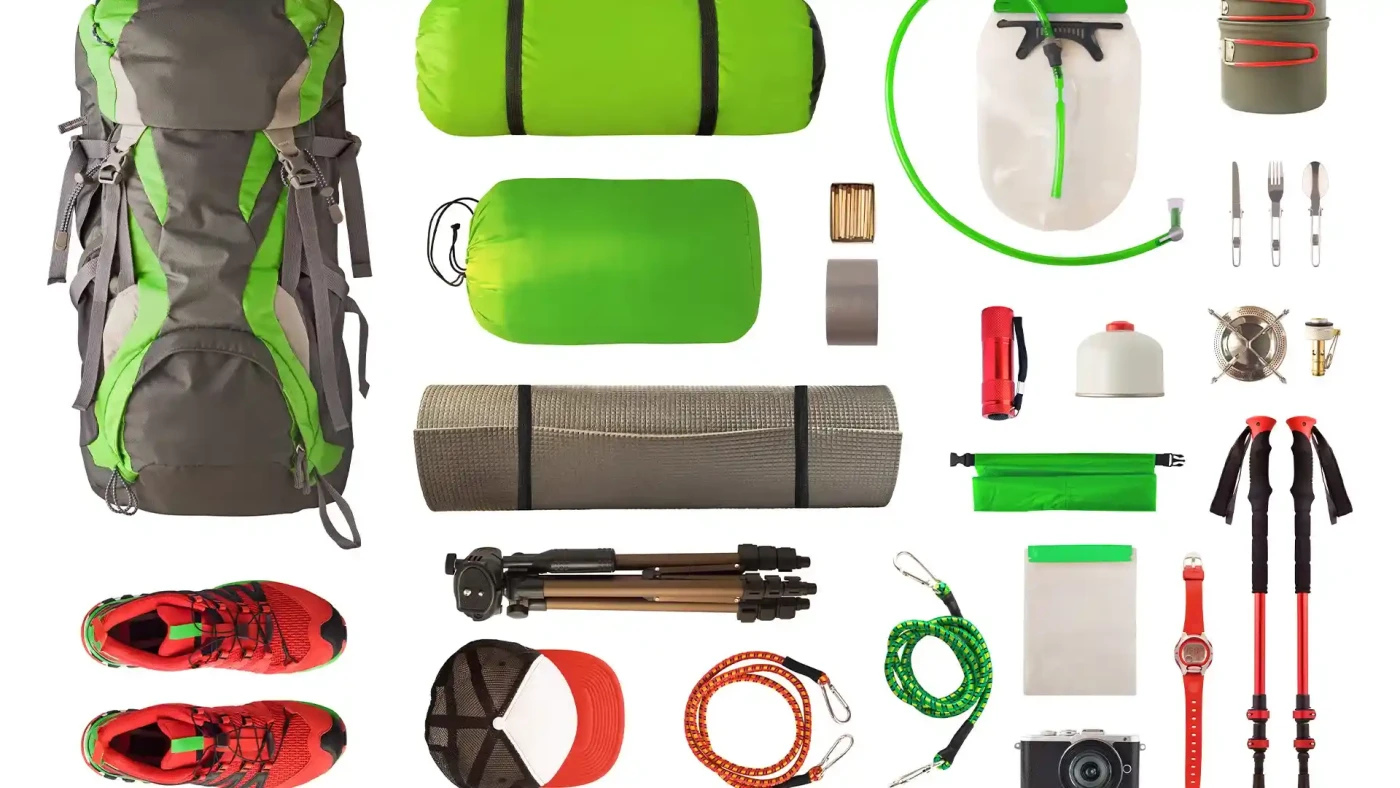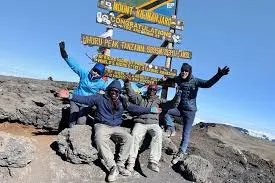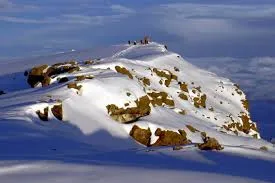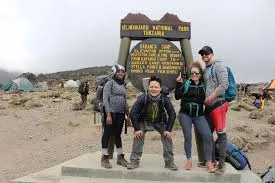What to Pack for Mount Kilimanjaro — Ultimate Gear Guide
When preparing for Mount Kilimanjaro, focus on packing layers that can handle a variety of conditions: moisture-wicking base layers, insulating mid-layers, and waterproof/windproof outer layers. Bring a lightweight, durable duffel bag and a daypack for essentials. Use compression sacks and roll clothes to maximize space, and prioritize key items like hiking boots, a warm sleeping bag, sun protection, and any personal necessities. This a complete packing list guide covering all essentials for a 6–9 day Kilimanjaro trek with Capable Africa Tours.
Plan Your Kilimanjaro Trek Now
Daypack (25–30L)
Carry water, snacks, rain gear, camera, and daily essentials.
Sleeping Bag
4-season or rated for at least -10°C (14°F) for cold summit nights.
Waterproof Jacket & Pants
Essential for rain and wind protection in unpredictable weather zones.
Hiking Boots
Broken-in, waterproof, and with good ankle support for rocky trails.
Thermal Layers
Base layers and fleece or down jackets for cold nights and summit day.
Headlamp with Extra Batteries
For summit night and early mornings at camp — hands-free lighting is a must.
Trekking Poles
Help reduce knee strain, especially during descent on loose terrain.
Sunscreen, Sunglasses & Hat
Protection from strong UV exposure at high altitudes.
Personal Toiletries & Medications
Biodegradable wipes, hand sanitizer, altitude pills, and essentials.
Essential Mount Kilimanjaro Packing List
The essential Mount Kilimanjaro packing list includes items that ensure comfort, safety, and efficiency on your trek. Focus on layering moisture-wicking base layers, insulating mid-layers, and waterproof/windproof outer layers. Bring a lightweight, durable duffel bag and a daypack for daily essentials. Use compression sacks and roll clothes to maximize space, and prioritize key items such as hiking boots, a warm sleeping bag, sun protection, and personal necessities. Below is a thorough packing checklist designed to cover all must-have items for a 6–9 day Kilimanjaro trek with Capable Africa Tours.
Clothing (Layered for All Conditions)
- Base Layers: 3–4 moisture-wicking shirts and pants (e.g., merino wool, 200g weight) for warmth and sweat management.
- Mid-Layers: 2 fleece jackets or sweaters (300–400g) for insulation in cooler zones (40–60°F).
- Outer Layers: Waterproof, windproof jacket and pants (Gore-Tex recommended) for rain and summit winds.
- Thermal Gear: Insulated down jacket (800-fill) and thermal underwear for summit night (0–20°F).
- Accessories: 2–3 pairs of wool socks, waterproof hiking boots (broken-in), gaiters, gloves (inner and outer), and a warm hat.
- Sun Protection: Wide-brimmed hat, sunglasses (UV400), and neck gaiter for high-altitude UV exposure.
Gear and Equipment
- Daypack: 30–40L backpack (5–7kg) for daily essentials like water and snacks.
- Duffel Bag: Waterproof, 70–90L bag (up to 15kg) for porters to carry.
- Sleeping Bag: Rated for -15°C/5°F, with a sleeping pad (R-value 4+).
- Trekking Poles: Adjustable, lightweight poles (500–700g) for stability.
- Headlamp: 200+ lumens with spare batteries for summit night.
- Water System: 3L hydration bladder or 2 reusable bottles (Nalgene, 1L each).
Personal Items
- First-Aid Kit: Bandages, blister pads, painkillers, and altitude medication (e.g., Diamox).
- Toiletries: Biodegradable soap, toothbrush, high SPF sunscreen (50+), and lip balm.
- Documents: Passport, visa, travel insurance, and vaccination card (yellow fever).
- Electronics: 10,000mAh power bank, camera, and spare batteries.
- Miscellaneous: Wet wipes, hand sanitizer, small towel, and snacks (e.g., energy bars, 500–1,000g).
Why Packing Right for Kilimanjaro Matters
Packing right for Kilimanjaro is essential for comfort, safety, and success on your trek. Proper packing ensures you have the right clothing for varying temperatures, adequate protection from rain and wind, and all necessary gear to make your climb efficient and enjoyable. Avoiding unnecessary items helps you move more easily and reduces strain on your body. Here’s a detailed guide explaining why packing correctly is important and how to prepare for a 6–9 day Kilimanjaro trek with Capable Africa Tours.
Reasons packing matters:
- Ensures safety and comfort
- Reduces strain on your body
- Provides proper gear for varying weather
- Keeps you efficient and mobile
Prepare for Your Kilimanjaro Adventure
Pack smart for Mount Kilimanjaro with Capable Africa Tours’ expert guidance. Watch this video to visualize your trek and essential gear.
Tips for Packing Light and Smart for your Kilmanjaro Climb
To pack light and smart for Kilimanjaro, focus on layering moisture-wicking base layers, insulating mid-layers, and waterproof/windproof outer layers. Choose a lightweight, durable duffel bag for porter-carried gear and a daypack for your daily essentials. Use compression sacks and roll clothes to save space, and prioritize only the most important items — such as quality hiking boots, a warm sleeping bag, and sun protection. Here’s a detailed packing guide with practical tips to help you pack efficiently for a 6–9 day Kilimanjaro trek with Capable Africa Tours.
- Test Your Gear: Break in boots and test layers on short hikes to avoid blisters.
- Pack Multi-Use Items: A neck gaiter doubles as sun protection and a scarf.
- Limit Extras: Stick to 2–3 outfits to stay within the 15kg limit.
- Rent Heavy Gear: Rent sleeping bags or jackets from Capable Africa Tours to reduce luggage.
- Organize with Packing Cubes: Keep gear tidy in your duffel bag for easy porter access.
- Bring High-Energy Snacks: Pack 500–1,000g of energy bars or nuts for quick boosts.
Ready to Climb Mount Kilimanjaro?
Pack smart and trek with confidence with Capable Africa Tours. Our expert guides and comprehensive packing guide ensure a safe, memorable climb to Kilimanjaro’s summit.
- 98% summit success rate with expert guides
- Eco-friendly trekking with local community support
- Comprehensive gear rentals available
- Customizable routes and itineraries
- All-inclusive packages with meals and transfers
Limited spots for Kilimanjaro treks — book now to secure your adventure!
Plan Your Trek Now


